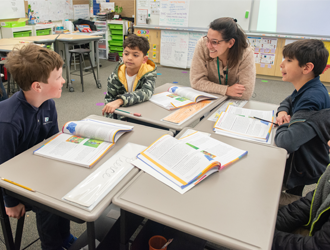Creating a Dialogue: Strategies for Discussing Difficult Topics

Having difficult conversations in the classroom can be challenging. But it can also be an exciting learning opportunity. As students learn to engage with complex issues and opposing viewpoints with openness and respect, they practice openness and honesty and critical thinking. They have the chance to expand their worldview by listening to others’ thoughts and ideas. In order to use challenging conversations as learning opportunities, teachers can create the conditions for these conversations to go smoothly. Consider:
- Create group norms. These can be created collaboratively by students and agreed upon as a whole class. Norms can include not interrupting, making eye contact with the speaker, and following up with questions.
- Generate a list of “yes words” and “no words.” Students agree to use yes words (and phrases), which move the conversation in the right direction, and to avoid no words (and phrases), which can derail a conversation. “I feel hurt by your words,” is a yes because it addresses behaviors. “You’re mean,” which focuses on character and can cause defensiveness.
- Employ the rule of five, where students have to wait five seconds or five minutes before responding, depending on the nature of the discussion. In those five seconds/minutes, students silently repeat to themselves (silently) what the speaker said. Students must strive for understanding what was said, and after the five seconds/minutes, students are allowed to respond (Vanderbilt, n.d.).

When we offer students a framework from which to engage with difficult conversations, we are giving them the tools to not only engage with a wide variety of perspectives, but to feel confident in themselves and their ability to express themselves.

References
Vanderbilt University Center for Teaching. (n.d.).Difficult Dialogues. https://cft.vanderbilt.edu/guides-sub-pages/difficult-dialogues/








